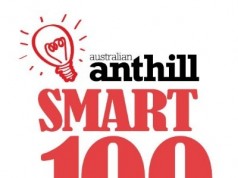This SMART 100 profile and the information it contains is a duplication of content submitted by the applicant during the entry process. As a function of entry, applicants were required to declare that all details are factually correct, do not infringe on another’s intellectual property and are not unlawful, threatening, defamatory, invasive of privacy, obscene, or otherwise objectionable. Some profiles have been edited for reasons of space and clarity.
Learn more about the SMART 100 >>
1. THE BEGINNING
This innovation initially came to life when…
Both my parents are in their 80’s. I’d like to help them and others, age in home rather than move into an aged care facility. Studies have shown the average length of stay in an aged care facility is only 3 years. A quarter of the population only lasts 6 months. It is hugely advantageous for elders to age in home.
2. WHAT & HOW
The purpose of this innovation is to…
…enable elderly people to age in home, whilst relieving family and caregivers’ concerns.
It does this by…
…at Hexagon, we’ve developed a wearable technology that enables reliable fall detection, medication adherence as well as abnormal behaviour detection. Our technology can relieve family and caregivers’ worry for an elderly person, especially if they are living alone.
3. PURPOSE & BENEFITS
This innovation improves on what came before because…
Interviewing in-home aged care providers, reliable fall detection and medication adherence have been flagged as both important and lacking in the market.
Its various benefits to the customer/end-user include…
According to a US study, by 2020, the population of elders (age 65+) are expected to reach 1.4B. Most families can not stay with their elders 24/7, and so are often concerned for their elderly if left home alone.
4. COMPETITIVE LANDSCAPE
In the past, this problem was solved by…
Historically, the market began with home based security firms trying to diversify their market and use cameras and movement sensors in the house to monitor elderly people in their homes. Very quickly the cameras were removed as people were concerned for their privacy.
The most common technology is a pendant or pocket button for elderly to press when they require urgent assistance. These solutions have a base station located in the house and do not support the elderly when they leave the house.

5. TARGET MARKET
It is made for…
Family and caregivers of elderly people, living independently at home. Our technology is aimed at relieving the worry of caregivers for their elderly, and hope to assist family pre-empt well-being or independence deterioration by early detection of behavioural changes.
The Personal Emergency Response Systems (PERS) market is forecasted to reach $5B at CAGR of 6% by 2020.
It is available for sale through…
We are seeking both health insurers and in-home-care providers as potential partners for distribution.
Our marketing strategy is to…
The baby boomer’s currently represent the majority of the children of elderly. The baby boomer demography is very active on Facebook. We intend to use this channel to promote the wearable. The buyer is most likely the direct children, and the users (wearers) are the elderly.
FINE PRINT: This SMART 100 profile and the information it contains is a duplication of content submitted by the applicant during the entry process. As a function of entry, applicants were required to declare that all details are factually correct, do not infringe on another’s intellectual property and are not unlawful, threatening, defamatory, invasive of privacy, obscene, or otherwise objectionable. Some profiles have been edited for reasons of space and clarity.
Maven Judge Vote: Wearable For Aged Care – Smart 100 2018
(Please note – The form below is for judging purposes only and is restricted to the public)





![Five ways to manage your time by managing yourself, with Helen Ebdon [CHEAT SHEET]](https://anthillonline.com/wp-content/uploads/2015/07/ebdon-3d-cover-01--300x194.png)
![How To Grow Your Business and Profits with Jason Cunningham [CHEAT SHEET]](https://anthillonline.com/wp-content/uploads/2015/07/Cunningham-100x75.png)
![Generating Web Traffic with Mark Middo and James Tuckerman [FREE REPORT]](https://anthillonline.com/wp-content/uploads/2015/08/Capture3-100x75.jpg)
![Four principles to creating dedicated customers…or zombie loyalists with Peter Shankman [Free report]](https://anthillonline.com/wp-content/uploads/2015/11/Screen-Shot-2015-11-26-at-11.16.26-100x75.png)
![Strategic Alliances with Simone Novello [FREE INFOGRAPHIC]](https://anthillonline.com/wp-content/uploads/2015/08/Capture6-100x75.jpg)
![Need cash for your startup or innovation? Here’s the Ultimate Grant Guide for Innovators and Startups [FREE DOWNLOAD]](https://anthillonline.com/wp-content/uploads/2015/10/INNOVATORS-GRANT-GUIDE-NFSU-page-spread-100x75.png)

![It’s viral video goodwill, something that advertising just can’t buy [VIDEO]](https://anthillonline.com/wp-content/uploads/2013/12/WestJet-300x350.jpg)
![How to pitch sales and marketing ideas to your boss with James Tuckerman [FREE REPORT]](https://anthillonline.com/wp-content/uploads/2015/07/Render-3-300x194.png)
![Learn how to use Instagram as a business tool [FREE INFOGRAPHIC]](https://anthillonline.com/wp-content/uploads/2012/12/nickelbackinstagram-100x75.jpg)
![How to build a retail empire with James Webber [FREE REPORT]](https://anthillonline.com/wp-content/uploads/2015/06/james-webber-instagram-memes-01-100x75.jpg)
![Ever considered crowdfunding? [FREE REPORT]](https://anthillonline.com/wp-content/uploads/2017/03/liz-wald-100x75.png)
![New Zealand’s Xero eyes US IPO, further disruption as subscribers increase [INFOGRAPHIC]](https://anthillonline.com/wp-content/uploads/2014/07/sruuuuujana-212x194.png)
![Ever wonder if your ‘content marketing’ is really just crap? You gotta see this! [INFOGRAPHIC]](https://anthillonline.com/wp-content/uploads/2014/08/content-100x75.jpg)
![7 Business Lessons From Game of Thrones [INFOGRAPHIC]](https://anthillonline.com/wp-content/uploads/2014/10/infographic-games-of-thrones-041-100x75.jpg)
![How to build your own Media Empire… In seven steps with Nathan Chan [INFOGRAPHIC]](https://anthillonline.com/wp-content/uploads/2014/10/Nathan-Chan-Infographic-e1413419529176-100x75.jpg)
![5 Business Lessons From Tinder [INFOGRAPHIC]](https://anthillonline.com/wp-content/uploads/2014/10/Tinder-Elegant-Infographic-100x75.jpg)



